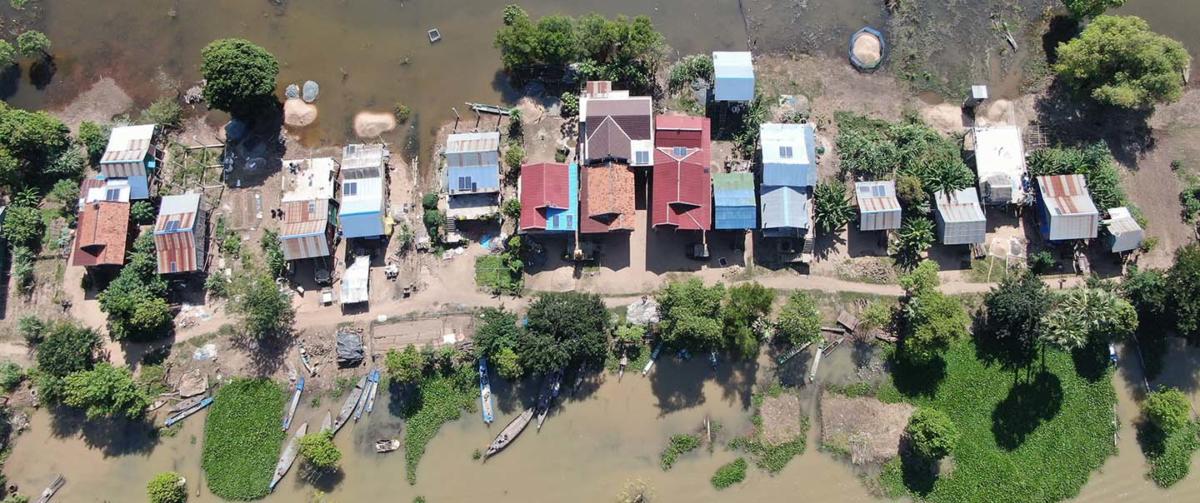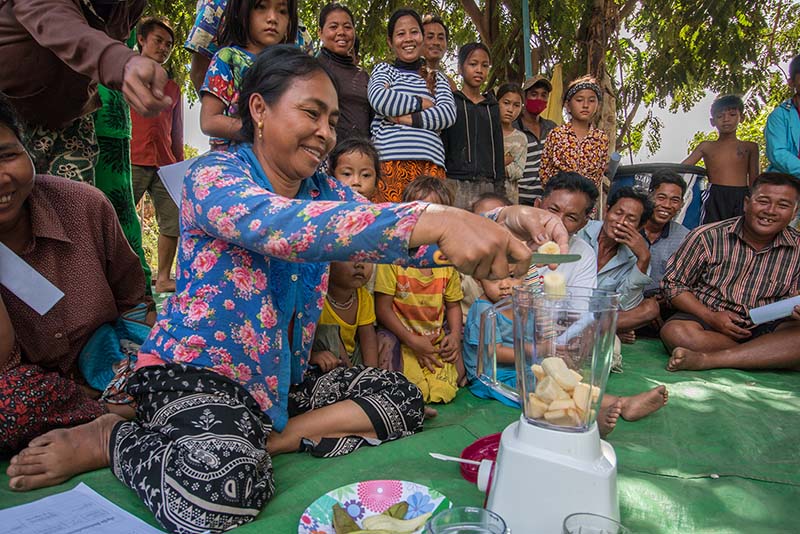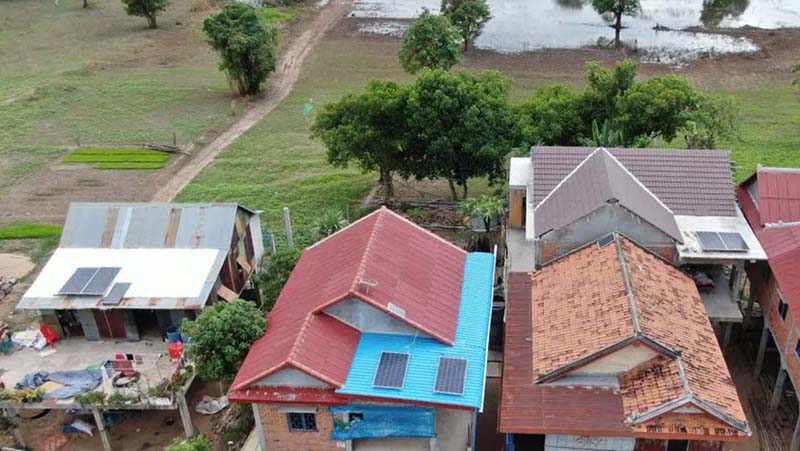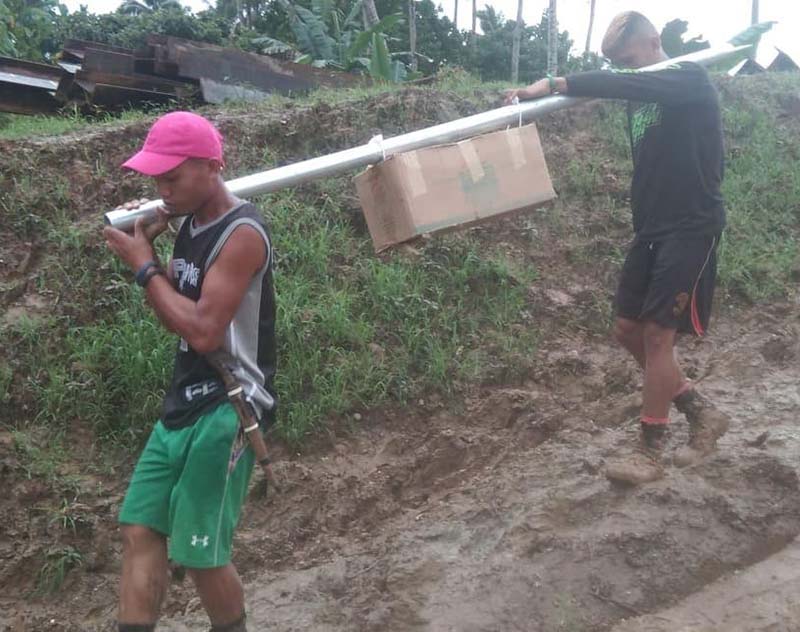One hundred and forty households in the rural Cambodian village of Steung Chrov now have access to clean, reliable electricity, thanks to an innovative technology developed by Australian startup Okra Solar. According to founder Afnan Hannan, Okra Solar is “unlocking the potential of villages and micro-entrepreneurs” with smart microgrids connected to the Internet of Things (IoT). The company’s goal is to cut the cost of rural electrification in developing countries substantially.
Okra Solar’s Operations Manager Otteh Edubio discussed direct current (DC) mesh grids technology at HOMER Energy by UL’s ninth annual HOMER Microgrid and Hybrid Power International Oct. 12-14, 2021. He presented during the Off-grid Systems and Their Expanding Role in Industrialized Countries session.

“The important thing is that this is a DC mesh grid, which can be installed for a fraction of the cost of a typical AC mini-grid,” said Okra Solar Operations manager Otteh Edubio. Okra Solar estimated the cost of DC grids is 40% less than traditional alternating current (AC) microgrids.
Edubio explained the Okra Solar grid in Steung Chrov, Cambodia, combines hardware and a software management platform to create peer-to-peer networks and perform IoT remote monitoring. Together, these technologies allow individual energy consumers to share power generated from low-cost solar home and battery systems. While each household or business functions as an autonomous energy user, mesh networks balance energy supply and demand and then send electricity where needed at any given moment. This configuration provides a cost-effective solution for the small percentage of rural Cambodian communities that still don’t have access to the national electric grid.
Electricity is changing living conditions in Steung Chrov

Nearly every household in Steung Chrov has a home solar system with small battery backup to power various small appliances. The heart of the Okra Solar system is the Okra Pod, a Maximum Point Tracking (MPPT) unit, or DC to DC controller that converts the output from photovoltaic modules into a lower voltage suitable for recharging the home batteries. However, the Okra Pod does more than charge batteries: the system enables people to plug in household appliances, such as rice cookers, refrigerators, blenders, phone chargers and other devices, that can be DC-powered. Additionally, it can serve an AC load and even power street lights, which gives villagers a sense of security and helps them avoid local dangers such as poisonous snakes active at night, according to Edubio.
The Cambodian DC mesh microgrids that Edubio has worked on provide critical services and protect local ecosystems — an important Cambodian sustainability goal. The microgrid supplied electricity enables alternatives to depleting local forests for cooking fuel, and allows residents to try out the emerging non-polluting e-bikes and scooters. It also opens the door to economic development by powering sewing machines, sugar cane juice pressers, ice crushers, blenders, smoothie makers and other appliances supporting productive home businesses.
DC mesh grids versus AC mini-grids
The financial savings gained from the Okra Solar DC mesh grid stem partly from the avoided expense of oversizing a central generation and storage system. Typically, a system is oversized to power maximum potential demand for the whole community. Oversizing also accounts for power losses during transmission to remote households in the network.
Instead, mesh grid networks make power available close to where it is used, and pump excess electricity into the network for neighboring households. In the unlikely circumstance that every household needs power simultaneously, they would each have access to up to 1200 watts of power output and enough energy to meet their needs, said Edubio.
Avoiding expensive distribution infrastructure
Steung Chrov’s DC mesh grid infrastructure minimized the need for transmission or distribution lines, which reduced costs for installation, land leasing and clearing, and security guards and fencing. The energy infrastructure exists simply as a collection of solar home systems, but with the added benefit of being a network.
Mesh Networks Defined
Although the term is usually used to describe local networks, the internet is actually the world’s biggest mesh network. Any configuration where nodes link directly and dynamically to each other without going through a top-down hierarchy could be described as a mesh network.

One of the highest avoided costs is the “last mile” — the expense of connecting every building in the community to a distribution network. The last mile is a daunting and expensive aspect of rural electrification. Instead, the DC mesh grid connects small groups of buildings — anywhere from one to one hundred households — avoiding the construction and upkeep of feeders that link the clusters to each other and the central power grid. Additionally, the cables interconnecting households can be a tenth the size of AC mini-grid cabling. Since the system is modular, operators can add storage and generation capacity without redesigning the network if people need additional power.
Lower cost operations and maintenance
One significant change from grid transmission is that operation and maintenance don’t require trained electricians. Local residents can do the work because the system uses an extra-low voltage of electrical transmission and a remote monitoring platform. The system’s software diagnoses issues, optimizes network profitability and communicates operational issues to local community agents. The agents then use local labor for repairs or maintenance, keeping costs lower than AC mini-grids.
Edubio said Cambodian government and utility officials recently visited Steung Chrov and are hopeful that Okra Solar’s DC mesh networks can deliver results at lower costs and potentially contribute to completing the rural electrification of the area. In recent years, Cambodia has reached 98% electrification. Edubio said that DC mesh networks can help achieve the remaining 2% of communities in extremely remote rural areas.
The company continues to scale up to power remote communities in other countries, including Nigeria, Indonesia, the Philippines and Haiti.
Affordable rural energy reduces poverty, protects critical natural resources

Organizations and governments worldwide recognize that access to affordable, clean energy remains critical to health, well-being and economic development. Energy access is a critical component of the United Nations mission to reduce world poverty and protect local ecosystems, outlined in its 2030 Agenda for Sustainable Development and its Sustainable Development Goals.
Hybrid power microgrids that combine and optimize resources such as solar, batteries and diesel engines are helping provide access to clean energy. While the number of people who benefit is accelerating, according to the global research organization World Resources Institute, between 700 million and 1.2 billion people still don’t have access to basic electricity. The work that Okra Solar is doing to electrify remote rural communities is an important contribution to the reduction of energy poverty worldwide.
About Otteh Edubio
Otteh Edubio began his career working in research and development in the medical device industry. He transitioned to managing energy projects as the operations manager of African Clean Energy, where he provided remote communities with solar-biomass hybrid smokeless gasifier stoves in Cambodia, Uganda and Lesotho. Edubio then began working with Okra Solar as the manager of Service Delivery. Now he works to deploy profitable electrification and accelerate access to clean, reliable energy for the millions of people who are still not connected to power. He has led projects in Cambodia, Nigeria, the Philippines and Haiti.
Readers are invited to watch the proceedings of HOMER Energy by UL’s ninth annual HOMER Microgrid and Hybrid Power International on-demand. Otteh Edubio presented “Engineering in a Typhoon” during the session dedicated to Off-grid Systems and Their Expanding Role in Industrialized Countries. This year’s conference theme, “Powering the New Energy World,” includes six separate online sessions over three days. On-demand viewing is available on the conference website.

Thank you for this sharing, I hope some day this microgrids will realize in West Papua. I need college to share your experience microgrids.
Thank you for your comment Elias. Yes, maybe you will see a microgrid of this type in West Papua.
All the best,
Lili